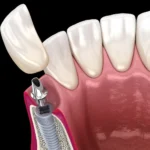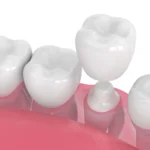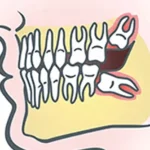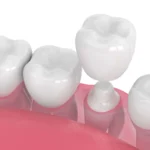Tooth extraction is one of the most common procedures in dental practices around the world. Whether it’s due to severe decay, gum disease, crowding, or trauma, many individuals find themselves needing a tooth removed at some point in life. Fortunately, modern dentistry for tooth extractions has evolved significantly, making the process safer, more efficient, and less painful than ever before.
In this guest post, we’ll explore why tooth extractions are necessary, the different types of extractions, what to expect during and after the procedure, and how to find the right dental professional for your needs.
Why Are Tooth Extractions Necessary?
Tooth extraction is often seen as a last resort, only pursued when other restorative options are no longer viable. Here are some common reasons why a dentist might recommend an extraction:
- Severe Tooth Decay or Infection
When decay reaches the pulp—the center of the tooth containing nerves and blood vessels—it can cause an infection. If a root canal isn’t possible or the infection is too severe, extraction may be the only option. - Periodontal (Gum) Disease
Advanced gum disease can cause teeth to loosen due to the deterioration of bone and tissue. In some cases, removing the tooth is necessary to prevent further damage and allow for periodontal treatment. - Impacted Teeth
Wisdom teeth, or third molars, often become impacted, meaning they don’t fully emerge from the gums. This can cause pain, crowding, and infection, necessitating extraction. - Orthodontic Treatment
In preparation for braces or other orthodontic procedures, some patients may need teeth removed to make space for proper alignment. - Trauma or Injury
Accidents can damage teeth beyond repair, leading to the need for extraction.
Types of Tooth Extractions
Dentistry for tooth extractions typically falls into two categories:
1. Simple Extractions
Performed on visible teeth, simple extractions are typically done under local anesthesia. The dentist loosens the tooth using a special tool called an elevator, then removes it with forceps.
2. Surgical Extractions
Used for teeth that are not easily accessible (e.g., impacted wisdom teeth), surgical extractions are more complex and may involve cutting into the gum or even removing bone. This procedure may require local anesthesia, sedation, or general anesthesia depending on the complexity and patient needs.
What to Expect Before, During, and After the Procedure
Understanding the process can help reduce anxiety and prepare you for what’s ahead.
Before the Extraction
- Consultation: Your dentist will review your medical history, take X-rays, and discuss options.
- Preparation: You may need to avoid eating or drinking for several hours prior, especially if anesthesia is involved.
- Antibiotics: In some cases, antibiotics may be prescribed before and/or after the extraction.
During the Extraction
- Local anesthesia is administered to numb the area.
- For simple extractions, the tooth is loosened and removed.
- For surgical extractions, an incision is made, and the tooth may be sectioned into smaller parts for easier removal.
Aftercare
Post-extraction care is crucial for healing and avoiding complications like dry socket. Here’s what to keep in mind:
- Bite on Gauze: This helps control bleeding and promote clot formation.
- Pain Management: Over-the-counter or prescribed painkillers may be used.
- Ice Packs: These reduce swelling and discomfort.
- Diet: Stick to soft foods and avoid drinking through a straw.
- Oral Hygiene: Keep the area clean but avoid vigorous rinsing for the first 24 hours.
Risks and Complications
Like any medical procedure, tooth extractions carry some risks, although complications are rare when handled by skilled professionals.
- Dry Socket: This painful condition occurs when the blood clot at the extraction site dislodges or dissolves, exposing the underlying bone.
- Infection: Proper hygiene and sometimes antibiotics help prevent this.
- Nerve Damage: Uncommon but more likely in complex surgical extractions, especially in lower wisdom teeth.
Being open with your dentist about your medical history, following aftercare instructions, and attending follow-up appointments minimizes these risks.
Benefits of Professional Dentistry for Tooth Extractions
Modern dentistry offers significant advantages for those needing extractions:
- Minimally Invasive Techniques: Dentists now use refined tools and techniques that reduce trauma to surrounding tissues.
- Sedation Options: Patients with dental anxiety can choose from various sedation options for a more comfortable experience.
- Faster Recovery: With proper care and technology, healing times have significantly improved.
- Customized Treatment Plans: Your dentist will create a personalized plan for pre- and post-extraction care, and discuss options for tooth replacement, like dental implants or bridges.
Choosing the Right Provider
Not all dental practices are the same. Here’s what to look for when selecting a dentist specializing in dentistry for tooth extractions:
- Experience and Credentials: Ensure the dentist has extensive experience with extractions and is licensed and board-certified.
- Technology: Practices equipped with the latest imaging and surgical tools often deliver better outcomes.
- Patient Reviews: Read reviews and testimonials to gauge patient satisfaction.
- Clear Communication: A good dentist should take the time to explain procedures, risks, and aftercare thoroughly.
- Emergency Services: Complications can arise, so choose a provider who offers prompt follow-up care if needed.
Tooth Replacement Options After Extraction
Losing a tooth doesn’t mean you have to live with a gap in your smile. Dentistry for tooth extractions also includes planning for restoration:
- Dental Implants: A long-lasting and natural-looking option.
- Bridges: Useful when adjacent teeth can be used to support the restoration.
- Dentures: Partial or full dentures are affordable alternatives for multiple extractions.
Discuss these options with your dentist to determine the best fit for your lifestyle and budget.
Conclusion
Tooth extractions may sound daunting, but with today’s advancements in dentistry for tooth extractions, the process is more comfortable and effective than ever before. From simple extractions to complex surgical procedures, modern dental professionals are equipped with the skills and tools to ensure optimal outcomes.
If you’re facing the prospect of an extraction, don’t panic. Consult a trusted dentist, ask questions, and follow the recommended aftercare to support a smooth recovery. With the right care and planning, you’ll be on your way to better oral health and a confident smile.












